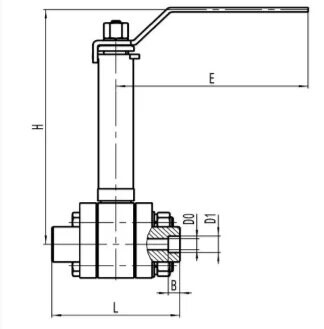Common Faults and Precautions in Cryogenic Valve Operation
Mar 09, 2024
Cryogenic valves are designed for use in extremely low-temperature environments, typically ranging from -40 degrees Celsius to -196 degrees Celsius. However, like any other valves, cryogenic valves are prone to various malfunctions. Here, we will explore common types of failures associated with cryogenic valves and precautions to be taken during their usage.

Common Failures of Cryogenic Valves
As critical equipment operated in extremely low-temperature environments, cryogenic valves may encounter various malfunctions during usage. Below are common types of failures associated with cryogenic valves:
1. Faults at Component Junctions
Common failures at various component junctions include packing failures and flange leaks.
Common failures at various component junctions include packing failures and flange leaks.
- Packing Failure: Valve stem packing is usually located in the packing groove adjacent to the valve stem against the cold box wall. If the packing is uneven, loose, not circular, or if the valve stem is not straight, cryogenic liquids or gases may leak outside through the gaps in the packing. In such cases, the packing may freeze, and the valve stem may be frozen, requiring steam or hot water heating of the packing to operate the cryogenic valve.
- Flange Leakage: Flange leakage is mainly caused by uneven sealing surfaces, inadequate pipeline compensation, uneven tightening of bolts, or improper bolt material.
2. Faults on the Valve Bonnet
The connection between the valve bonnet and the valve stem is movable, and after a period of use, the valve bonnet may become detached. This could be due to damaged anti-rotation gaskets causing loosening of the lock nut, or it could be due to damage caused by improper material of the lock nut. Additionally, improper closure of the valve bonnet may also result in gas leakage from the valve.
3. Faults on the Valve Stem
The most common fault on the valve stem is thread wear on the valve stem and nut, resulting in the valve being unable to close. This may occur due to excessive force applied when opening the valve, causing damage to the threads. When the threads are completely worn, the valve can only be opened and not closed, necessitating the use of temporarily added bolts to push the valve stem inward until professional maintenance can be performed.
When using cryogenic valves, special attention must be paid to the following points to ensure their normal operation, prolong their lifespan, and ensure the safety of operators and equipment:
- Friction Damage Reduction: Since the working environment temperature is extremely low, lubricating oil cannot be applied to the valve components, so measures must be taken to reduce friction damage.
- Heat Dissipation Prevention: Cryogenic valves should not become heat sources, as this could cause cryogenic media vaporization, resulting in abnormal pressure and potential hazards. Adequate preparation must be made during operation.
- Choosing Fire-resistant Materials: Due to the flammable and explosive nature of cryogenic media, fire-resistant materials must be used in parts that come into contact with cryogenic valves.
- Ensuring Quality: When selecting cryogenic valves, ensure their quality, as they operate in cryogenic environments for extended periods and need to have long-life characteristics.
In conclusion, understanding the common failures and precautions for using cryogenic valves is crucial to ensure their proper functioning. Only by following the correct operating procedures and precautions can cryogenic valves perform effectively.
Next: Optimization and Maintenance Guide for Wafer Butterfly Valves
Previous: Key Features of Metal Seated Ball Valves
About Us
Categories
Useful Links
Our Contacts
Building 2, NO.59, Songshan Road, SND, Suzhou, China
